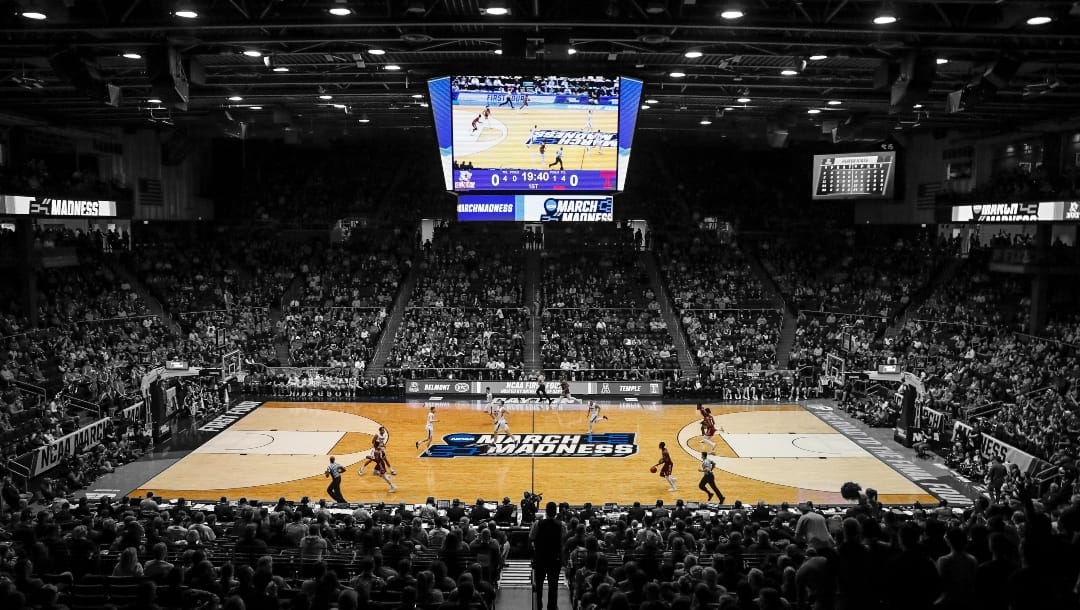The 2022 NCAA Tournament will include, for the 12th straight year (and the 11th straight tournament), 68 college basketball teams, 36 of which will earn at-large bids. And for the 11th straight tournament, the lowest-ranked at-large teams will open March Madness at the First Four in Dayton.
With Selection Sunday just a few days away, let’s compare the NCAA Tournament résumés for two bubble teams. First, the quadrant records and road record for the two teams (as of Friday, March 11).
| Team | Q1A | Q1 | Q2 | Q3 | Q4 | Road |
|---|---|---|---|---|---|---|
| A | 1-3 | 2-4 | 3-3 | 9-2 | 9-0 | 5-5 |
| B | 1-6 | 3-7 | 4-4 | 5-1 | 7-0 | 3-8 |
And compare seven notable metrics for the two teams.
| Team | NET | OPP NET | KPI | SOR | BPI | KP | SAG |
|---|---|---|---|---|---|---|---|
| A | 45 | 94 | 67 | 47 | 38 | 37 | 46 |
| B | 41 | 66 | 60 | 52 | 37 | 43 | 29 |
Who are the teams? And how should they be ranked by the committee?
Team A: Wake Forest
Team B: Indiana
As of Friday, Indiana should be higher. And by extending its season with a win over Michigan in the Big Ten Tournament on Thursday, the Hoosiers shouldn’t fall below Wake Forest, who lost to Boston College in the ACC Tournament on Wednesday.
While the Hoosiers have an atrocious road record (3-8) and have similar results metrics (KPI and SOR) and records in the first two quadrants, they have one fewer Quadrant 3 loss and are far better in Opponent NET and Sagarin.
The advantage in Opponent NET (66 vs. 94) is particularly notable because the committee gives more weight to that metric than the NET itself.
The two teams are among the Last Four In and First Four Out in many Bracketology projections, including Joe Lunardi’s projections from Friday. Lunardi has both teams among his Last Four In, with Wake Forest two spots ahead – and Xavier in the middle – of Indiana.
The gap is bigger in Bracket Matrix‘s aggregate of 133 projections. Wake Forest, the highest-ranked 12-seed, appears in 104 of those projections, while Indiana, second-ranked among the First Four Out, appears in only 36 projections.
MORE: Download a printable 2022 NCAA Tournament bracket
-
What are quadrant records?
After the 2017-18 season, the NCAA Tournament selection committee replaced the RPI (Ratings Percentage Index) with the NET (NCAA Evaluation Tool), a metric that relies on, among other things, game results, strength of schedule, game location, and offensive and defensive efficiencies.
Nearly five years later, we still don’t know exactly how the NET works and how much the committee relies upon it to build the field, we do know it’s used to place each game into one of four quadrants:
Quadrant 1: Home NET 1-30, Neutral NET 1-50, Away NET 1-75
Quadrant 2: Home 31-75, Neutral 51-100, Away 76-135
Quadrant 3: Home 76-160, Neutral 101-200, Away 136-240
Quadrant 4: Home 161-plus, Neutral 201-plus, Away 241-plusAnd Quadrant 1A is a subsection within Quadrant 1. It includes: Home NET 1-15, Neutral NET Top 25, and Away NET Top 40.
As NET rankings change with results, games can move in and out of quadrants. For example, a home Quadrant 1 win over the NET-25 team in December could become a Quadrant 2 win by March if that team drops outside the NET 30. Not until all regular-season and conference tournament games are played do quadrants become locked.
-
What are the NCAA Tournament metrics?
The selection committee uses dozens of metrics, though most of the focus in recent years has been on the seven metrics above:
NET: NCAA Evaluation Tool.
OPP NET: Ranking for a team’s opponents’ average NET.
KPI: Created by Kevin Pauga, the KPI, in short, ranks wins and losses for each team on a positive-to-negative scale (-1.0 to 1.0) and uses of a formula of, among other things, opponents’ winning percentage and scoring margin, to determine a KPI ranking.
SOR: The Strength of Record determines how difficult a team’s record is to achieve by accounting for, among other things, game site and travel distance.
BPI: The Basketball Power Index represents how many points below or above average a team is, measuring team strength for future success.
KP: Ken Pomeroy’s predictive metrics are meant to “show how strong a team would be if it played tonight, independent of injuries or emotional factors.”
SAG: Jeff Sagarin’s ratings, most notably, don’t consider wins and losses, instead focusing on score differentials, and don’t consider efficiency stats.


